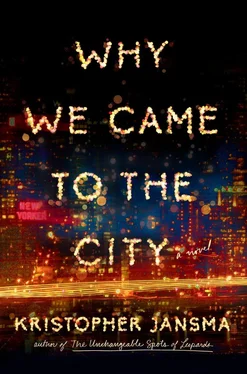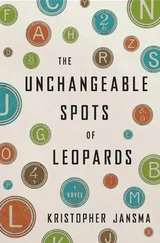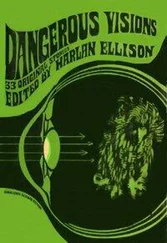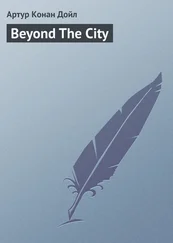When you get there, just let me know you made it, all right?
1
Exiting the gallery doors, William saw the Brooklyn Bridge: two mammoth trunks straddling the East River, water blacker than the sky above. Over the surface a second, silver river of reflected light flowed the opposite way. Pale yellow headlights crossed the bridge’s span, departing Manhattan at the end of a long, cold Tuesday, while Brooklyn issued her own red taillights back against the tide. From where he stood, they were all just little points of light, proceeding and receding toward friends, meals, televisions, sins, solitude, sleep.
The bridge appeared to dwarf the skyscrapers on the far shore. Aortal and ventral, a pair of vaulting, twinned cathedral arches, roped together by a drape of cables. Slow troughs and sharp peaks, like a heartbeat on a monitor. True, William didn’t know much about architecture, couldn’t tell a keystone from a cornerstone. But he knew it was extraordinary. Particularly after what he’d seen inside the gallery, and after having just finished the second half of a joint he’d begun before arriving.
Particularly with the little piece of Irene he now carried in his jacket pocket. After a year in her wake, he felt her close again, hovering over his shoulder, two or three steps behind. Everything was louder and brighter, as if some knob on his dashboard had been cranked up after countless months on low. Living back at home, in his same old bedroom, smoking in the same old bathroom with the same old shower on, having the same old dinners and listening to his parents have the same old arguments. But now all the lights burned brighter, and he loosened his favorite red scarf, despite the chill in the air.
Hearing a sudden whoosh, William wheeled around to see a passing tour bus. The sightseers leaned over the railing to photograph the bridge, their flashes firing off uselessly in the dark, the glowing of their phone screens glowing back onto their smiling faces. He was glad to have someone to share the moment with, but even after the bus rolled away, he didn’t feel alone. Who was out there?
Sara and George and everyone else were still at the opening. Irene Richmond: The Disappointments . It was an awful title — she had never decided on one herself. But no matter. BOMB and Artforum were calling it one of the biggest shows of 2011 (even though it was only February), and thanks to them it was a mob scene. Juliette and Abeba had organized it with Sara, who was treating it like a rehearsal for the upcoming wedding. The same lighting designers, the same printer for the programs, the same caterers, who were now bringing around chocolate mousse served in marzipan-speckled eggs. Special Ethiopian coffee had been roasted. George had selected five North Fork wines.
The soon-to-be-married couple were the only people William had really known inside, and they were circling around like guppies, too quick to be caught. George was asking everyone if they’d seen Jacob, unclear if he was simply late (as always) or not showing up. The ironic thing was that William had actually mistaken George for Jacob at first. He didn’t look well. Heavier set, hairline receding. All the wedding planning, George had joked, fully aware of the looks he was getting. Sara, too, looked altered. Impatient. Missing twenty pounds she hadn’t needed to lose in the first place.
Everyone was giving toasts and making a big show of looking at the show. William didn’t see anyone else looking as he was looking. For the past two hours, he had religiously documented every sculpture, painting, and sketch, using his phone to record every inch from every angle. Already private dealers were bidding through back channels (or so Juliette and Abeba claimed). By week’s end, the pieces would be dispersed across America, maybe the world. Stationed in collectors’ foyers and bedrooms and on mantels above fireplaces. Tying rooms together. Creating atmosphere. Disappointment everywhere!
The proceeds were going to the Richmond Memorial Fund — an art school scholarship that Sara had organized. (Never mind that Irene had gotten her education gratis, sitting in the backs of lecture halls.) She was talking about getting into nonprofit work full time if this got enough attention from the right sorts of people. Certainly there had been a few photographers, snapping away. William had deliberately avoided their flashes and, once he could, ducked away before Sara or George could introduce him to anyone. They hadn’t spoken to him more than a few times all year, and he was surprised to have even gotten an invitation to the show. When he’d called Sara to accept, she’d acted as if they’d always been old friends, but he knew they hadn’t been and soon wouldn’t be again. Quietly he was editing himself out of their story.
He hated everything about it. He hated that Irene wasn’t at her own show. He hated that he kept thinking she was around the party somewhere, trying to pretend she wasn’t nervous about the coming reviews. Certainly there was buzz — possibly too much. Abeba seemed to fear there could be a backlash because people tended to think anything they’d been hearing a lot about was overrated. Better to be the underdog, to be plucked from obscurity. No, Juliette argued, because then why had you been so plucked and not them? They’d hate you worse for that. It was all a big catch-22. No way to win. Sell too little, and nobody cared. Sell too much, and you were a sellout. Unless you made selling out part of your shtick. But it didn’t really matter, William supposed. Irene’s show was a one-shot affair. First and last. By a dead girl, about dying. It was both unusual and confusing, two things that typically sent buyers reaching for checkbooks. But William didn’t care about that. As far as he was concerned, the work was perfect in and of itself.
Who else could have come up with something like Patient R5691414510 ? Irene’s last known sculpture, a life-sized effigy constructed out of the clear plastic bags the hospital gave out to hold personal items. Irene had entrusted the assembly instructions and sketches (all scribbled down during her last good days at Mount Sinai) to Sara, along with an inventory of the parts she had piled up under her red coat in that tiny closet, so that the cleaning staff wouldn’t discard them: bags stuffed with used gauze from her surgical dressings, tissues covered in other unidentifiable fluids, empty IV bags, balled-up pamphlets that the nurses left behind to advise on wound care and whatnot. She’d even salvaged an old PEG tube, and there it was in the gallery, running right into the “torso” and off toward an IV stand that Juliette and Abeba had set up alongside the piece. (The bag had been filled with neon-pink acrylic paint, meant to resemble a strawberry-flavored Assure milkshake.)
By Irene’s instructions, Juliette and Abeba had suspended Patient R5691414510 in the air with a series of clear fishing wires, so that she appeared to be levitating or maybe lying in an invisible hospital bed, her left arm dangling off the side, with Irene’s actual patient ID bracelet delicately looped around the “wrist” of an inflated rubber glove. Abeba was running around telling everyone what a challenge it had all been to preserve, and the headaches Irene had caused them all with the permits needed to present these potentially unsanitary items in public. William wondered who the new assistant was, who’d actually had to deal with all that, as Irene once had. The real purpose of the little narrative was, of course, all about stirring up some controversy and tacking another zero onto the price tag. Irene had never cared about that, and neither would he.
What he cared about was that she’d made a dozen intricate pieces in the year following the diagnosis. It was remarkable what she’d been able to do with the little she’d had on hand. Sculptures made out of glued-together orange prescription bottles and empty Assure bottles and Chinese food containers studded with little colored pills. There were several sketches she’d done after moving in with William, when she didn’t have access to her supplies. Stricken City II was the view out of his old apartment’s window, done in sumptuous simple charcoal. As in briquettes from a bag in his hall closet. “Stark and serene,” the critic at BOMB had written. The Times had preferred the three-dimensional Portrait of a Profound Disappointment —fashioned from chicken drumsticks (courtesy of Hill Country delivery), which Irene had Mod Podged and which did look eerily human when draped in a tweed that was clearly meant to resemble Jacob’s coat, though it was actually fabric taken from an old hat of William’s that he had only just then realized was missing. Artforum had deemed it “hauntingly decayed” and complimented the “blooms of rich, saturated pigments” in West of Eden, with its unreal landscape of seashells and vineyards and trash. Someone at Salon had felt this piece was “anodyne and dogged” and that the whole show was a “sheer visual confusion” full of “mundane flotsam and jetsam,” which was “erratic to the point of solipsism.” To each their own, he thought.
Читать дальше












